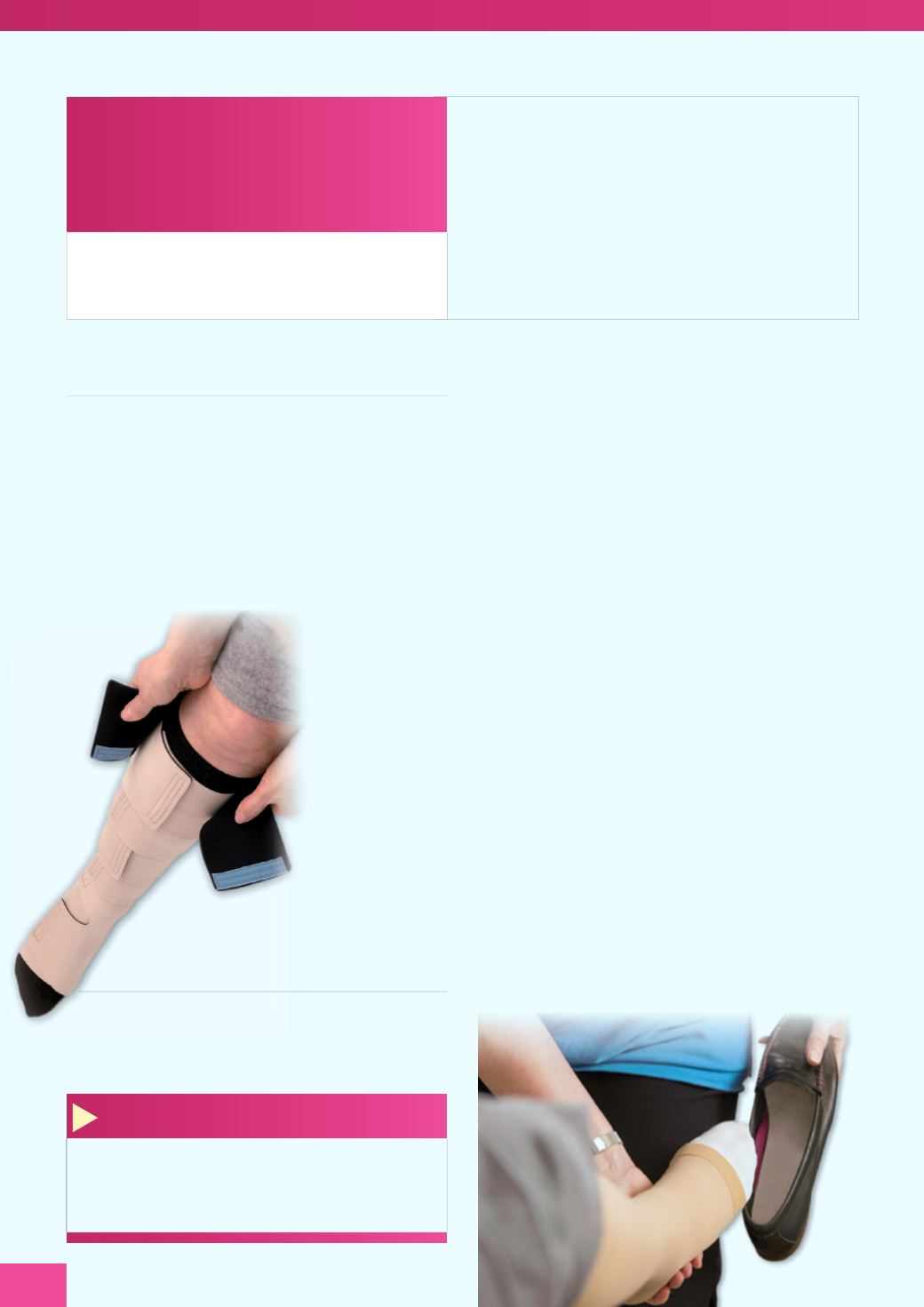
Snapshot
learning
This snapshot learning introduces L&R’s hosiery kits
and ReadyWrap
™
for the management of venous leg
ulcers. Read the feature, then go online and complete
the accompanying e-learning modules to find out
more about using these compression therapy options
in day-to-day clinical practice — the CPD points
gained count towards revalidation.
(www.jcn.co.uk/learning-zone/units/lesson/86/96 www.jcn.co.uk/learning-zone/units/lesson/98/106)Self-care solutions for
venous leg ulcers
WHY IS SELF-CARE IMPORTANT?
Since the publication of the
FiveYear ForwardView
(NHS
England, 2014), there has been increasing emphasis on
encouraging patients to become experts in their own care.
This enables people living with long-term conditions to
manage their health effectively, having greater choice and
control over the care they receive. Furthermore, engaged
and informed patients are less likely to make demands on
services, thus reducing costs to the NHS.
Venous disease, often leading to leg ulceration and chronic
oedema, is a long-term condition, which can be challenging
to manage, have a
negative impact on
patient wellbeing
and quality of
life and place
a considerable
economic burden on
healthcare resources
(Hopman et al, 2016;
EuropeanWound
Management
Association
[EWMA], 2016).
Compression
therapy is key to the
treatment and long-term
management of this condition.
HOW CAN HOSIERY KITS AND VELCRO WRAP-
AROUND COMPRESSION DEVICES HELP?
While four-layer compression bandaging (historically seen
as‘gold standard’treatment) has to be applied by skilled
clinicians, L&R’s hosiery kits are quick and easy to apply, and
patients and carers can be trained in how to put them on.
The range includes:
X
Activa Leg Ulcer Hosiery Kit for patients
without
oedema
X
ActiLymph
®
Hosiery Kit for patients
with
oedema,
without limb shape distortion.
The kits provide a consistent compression level of
~40mmHg when the two layers are worn together, but
without the bulk or discomfort of bandaging, meaning
that patients can wear their normal shoes (Lazelle
and Joyce, 2017). Showering is also easier than when
using bandaging, helping patients to maintain their
independence and personal hygiene (Tickle, 2014).
Being comfortable and more cosmetically appealing
also promotes concordance with treatment (Tickle,
2014; Lazelle and Joyce, 2017). The kits enable patients
and carers to take a far more active role in their own
care, as they are no longer dependent on nurses to
apply bandaging, but can don and doff the garments
themselves and carry out their own skin care regimens at
home. This frees up time for skilled practitioners to focus
on the management of more complex patients who
require bandaging.
Indeed, A randomised controlled trial (Ashby et al,
2014) has proven that two-layer compression hosiery
kits are as effective as four-layer bandaging for treating
venous leg ulcers, but at lower costs, and are associated
with lower recurrence rates. Thus, due to their effective
symptom management, economic benefits and positive
impact on patient quality of life, hosiery kits have been
recommended as a first-line treatment option for patients
with venous leg ulcers (Wounds UK, 2016).
46
WOUND CARE TODAY
2017,Vol 4, No 1
Snippet
Recent research has estimated that the annual cost of
wound care and associated morbidities to the NHS is
£5.3 billion, and that leg ulcers are the most commonly
treated wound (Guest et al, 2015).








